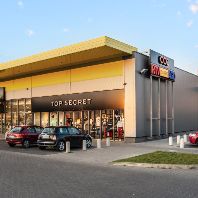According to CBRE, the European industrial and logistics market experienced an exceptional first quarter, with new Q1 records being set for both investment levels and occupier take up. Logistics take up was up 4.2% y-o-y, driven by the e-commerce industry and the resulting restructure of the supply chain by retailers. Investment levels were up 58% y-o-y.
The occupier market across Europe has been positively affected by several trends; the automotive sector and omnichannel offerings from retailers. In Germany and Central Europe the recovery of the automotive industry has increased demand for warehouse space. The impact of omnichannel offerings by retailers across Europe has meant that there is an increased demand for large-scale central hubs, return centres and city distribution facilities. As a result, vacancy rates have declined further in the first quarter of the year; moving between 4-6% in the northern Europe markets and between 6-9% in southern Europe. The only exceptions to this trend are in the UK and Poland, where vacancy rates have risen due to speculative development.
It was a very strong start for the investment market, with Q1 2016 delivering the highest first quarter volume on record. The exceptional levels are attributed to the unusually large pipeline reported at the end of last year. The buy side of the market was dominated by investment managers and funds that have an industrial track record. The UK and Germany led the way for investment in Q1 with both markets combining to account for nearly 60% of total European turnover.
Machiel Wolters, head of research, industrial and logistics, EMEA, commented: “The start of the year has been unusually strong and the sector remains blessed with very favourable market fundamentals and continues to stand out from other asset classes in terms of returns profile. In response to such demand, we have seen a rise in development. The UK, the Netherlands and Poland are experiencing high levels of speculative development and this is expected to spread to other European markets where occupier demand is strong. What will be interesting is the increasing need for city distribution hubs. This shift in the supply chain is driving operators and investors to evolve and redesign their traditional strategy and we are seeing small, scarce plots of land being developed into city hubs, and existing properties in strategic locations being redeveloped and redesigned.”















